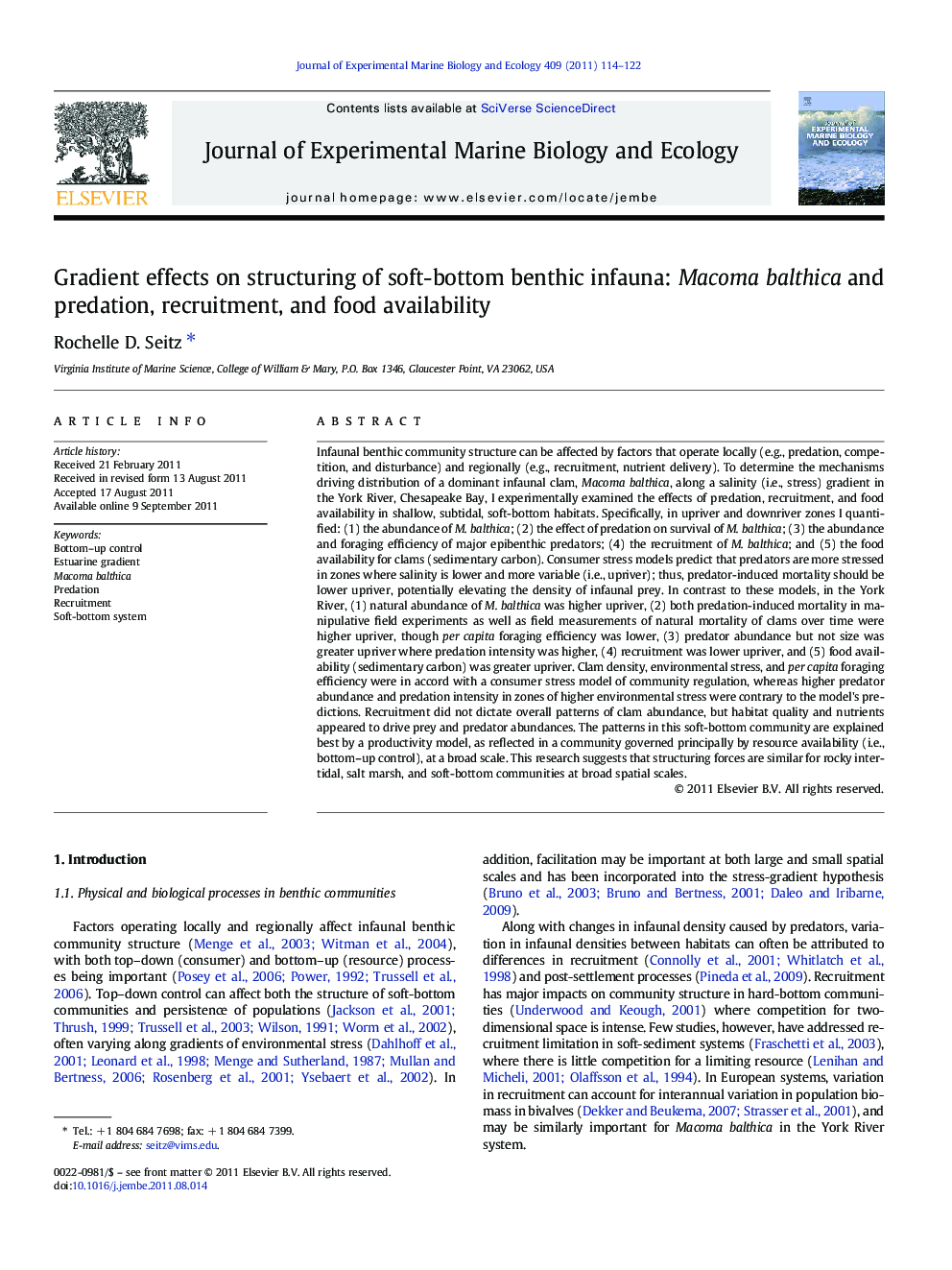| کد مقاله | کد نشریه | سال انتشار | مقاله انگلیسی | نسخه تمام متن |
|---|---|---|---|---|
| 4396180 | 1618455 | 2011 | 9 صفحه PDF | دانلود رایگان |

Infaunal benthic community structure can be affected by factors that operate locally (e.g., predation, competition, and disturbance) and regionally (e.g., recruitment, nutrient delivery). To determine the mechanisms driving distribution of a dominant infaunal clam, Macoma balthica, along a salinity (i.e., stress) gradient in the York River, Chesapeake Bay, I experimentally examined the effects of predation, recruitment, and food availability in shallow, subtidal, soft-bottom habitats. Specifically, in upriver and downriver zones I quantified: (1) the abundance of M. balthica; (2) the effect of predation on survival of M. balthica; (3) the abundance and foraging efficiency of major epibenthic predators; (4) the recruitment of M. balthica; and (5) the food availability for clams (sedimentary carbon). Consumer stress models predict that predators are more stressed in zones where salinity is lower and more variable (i.e., upriver); thus, predator-induced mortality should be lower upriver, potentially elevating the density of infaunal prey. In contrast to these models, in the York River, (1) natural abundance of M. balthica was higher upriver, (2) both predation-induced mortality in manipulative field experiments as well as field measurements of natural mortality of clams over time were higher upriver, though per capita foraging efficiency was lower, (3) predator abundance but not size was greater upriver where predation intensity was higher, (4) recruitment was lower upriver, and (5) food availability (sedimentary carbon) was greater upriver. Clam density, environmental stress, and per capita foraging efficiency were in accord with a consumer stress model of community regulation, whereas higher predator abundance and predation intensity in zones of higher environmental stress were contrary to the model's predictions. Recruitment did not dictate overall patterns of clam abundance, but habitat quality and nutrients appeared to drive prey and predator abundances. The patterns in this soft-bottom community are explained best by a productivity model, as reflected in a community governed principally by resource availability (i.e., bottom–up control), at a broad scale. This research suggests that structuring forces are similar for rocky intertidal, salt marsh, and soft-bottom communities at broad spatial scales.
► Predation, recruitment and food availability effects on Macoma balthica were examined.
► Abundances of bivalves differed across a gradient and were higher upriver.
► Predation intensity was higher upriver, though foraging efficiency was lower.
► Recruitment was lower upriver and did not dictate patterns of abundance.
► Food availability was higher upriver and bottom-up control regulated abundance.
Journal: Journal of Experimental Marine Biology and Ecology - Volume 409, Issues 1–2, 1 December 2011, Pages 114–122